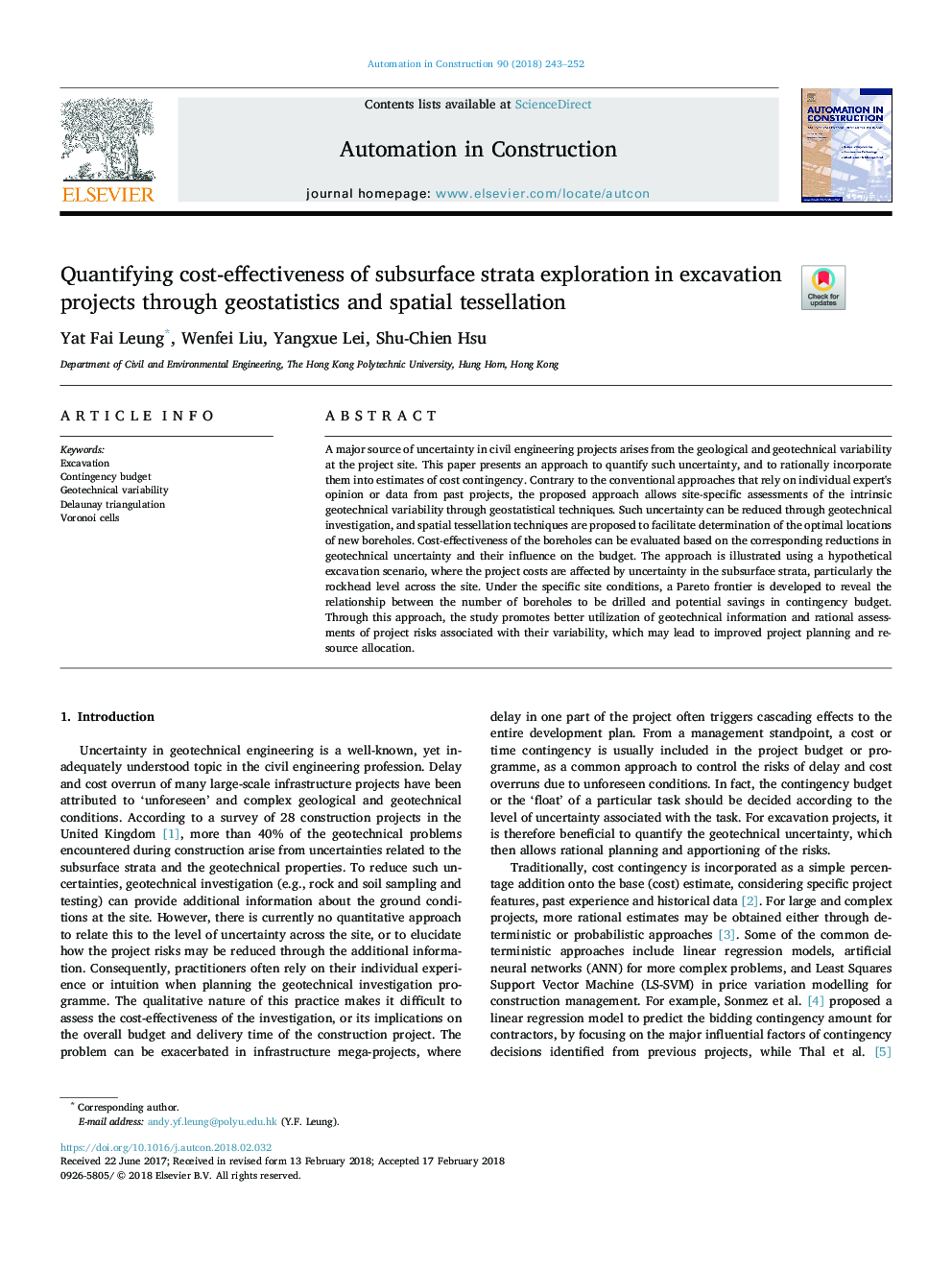| Article ID | Journal | Published Year | Pages | File Type |
|---|---|---|---|---|
| 6695689 | Automation in Construction | 2018 | 10 Pages |
Abstract
A major source of uncertainty in civil engineering projects arises from the geological and geotechnical variability at the project site. This paper presents an approach to quantify such uncertainty, and to rationally incorporate them into estimates of cost contingency. Contrary to the conventional approaches that rely on individual expert's opinion or data from past projects, the proposed approach allows site-specific assessments of the intrinsic geotechnical variability through geostatistical techniques. Such uncertainty can be reduced through geotechnical investigation, and spatial tessellation techniques are proposed to facilitate determination of the optimal locations of new boreholes. Cost-effectiveness of the boreholes can be evaluated based on the corresponding reductions in geotechnical uncertainty and their influence on the budget. The approach is illustrated using a hypothetical excavation scenario, where the project costs are affected by uncertainty in the subsurface strata, particularly the rockhead level across the site. Under the specific site conditions, a Pareto frontier is developed to reveal the relationship between the number of boreholes to be drilled and potential savings in contingency budget. Through this approach, the study promotes better utilization of geotechnical information and rational assessments of project risks associated with their variability, which may lead to improved project planning and resource allocation.
Related Topics
Physical Sciences and Engineering
Engineering
Civil and Structural Engineering
Authors
Yat Fai Leung, Wenfei Liu, Yangxue Lei, Shu-Chien Hsu,
